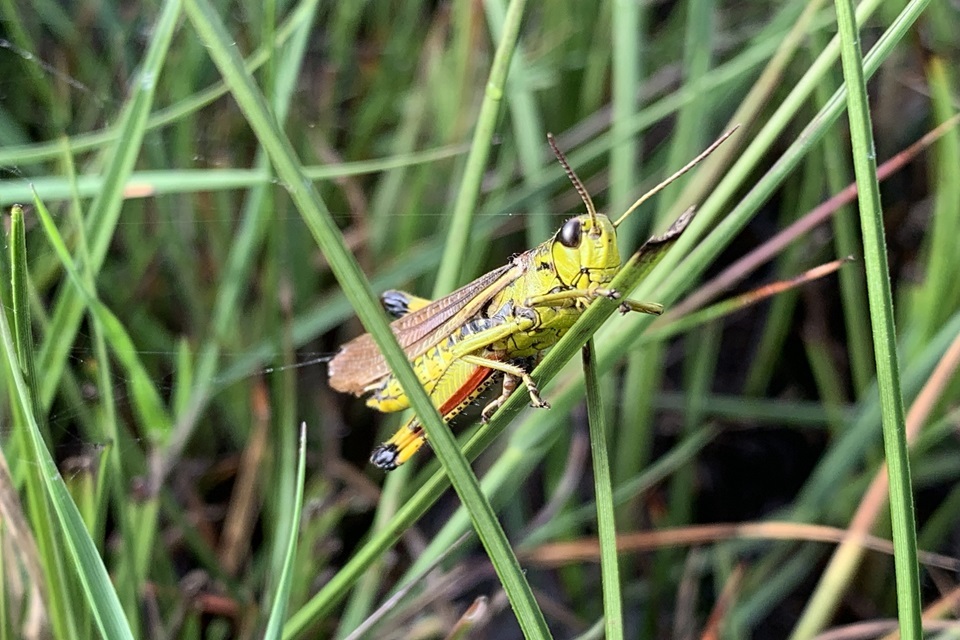Norfolk’s wetlands will once again echo with the distinctive ticking calls of the large marsh grasshopper following its successful reintroduction after an 86-year absence.
Citizen Zoo’s Hop of Hope project has seen this rare species return to Norfolk through innovative conservation techniques. The project allowed volunteers to home-rear and release thousands of grasshoppers at restored wetland sites, where habitat degradation previously led to the species’ decline.
This achievement demonstrates the impact of government investment in species recovery, with the project forming part of Natural England’s £13 million Species Recovery Programme Capital Grants scheme.
Hannah Thacker, area director for the Norfolk and Suffolk team at Natural England, said,
We’re delighted with the Hop for Hope project’s progress through our Species Recovery Programme Capital Grants. Our partners have developed groundbreaking techniques using pre-incubated eggs to establish new populations in Norfolk sites where bog and fen habitats are thriving.
These grasshoppers are not just surviving, but breeding and creating sustainable populations, demonstrating nature’s incredible resilience when given the right support.
The project’s most recent success, in the Norfolk Broads, saw large marsh grasshoppers hatched in the wild for the first time since 1939. It advances the government’s commitment to halt species decline by 2030, forming part of broader efforts to create England’s Nature Recovery Network.
Dr Stuart Green, from Citizen Zoo, said
The Species Recovery Capital Grant has helped us reintroduce one of the rarest grasshoppers in the UK. Citizen Zoo is reliant on experienced volunteers to make programmes like the Hop to Hope work and funding like this is vital to their success.
England’s threatened wildlife has experienced dramatic decline, with species dropping by more than half and one-in-8 assessed species facing extinction. The large marsh grasshopper’s return proves that collaborative action can bring species back from the brink of regional extinction.
The grasshoppers are breeding to maintain populations, showing how nature can thrive when given the right support. Photo Natural England
There are hopes to reintroduce large marsh grasshopper at other locations in Norfolk in the future depending on funding and location.
Background
- This is a partnership project led by Citizen Zoo and involving Norfolk Wildlife Trust, The Wildlife Trust for Bedfordshire, Cambridgeshire and Northamptonshire, Natural England and the South Yare Wildlife Group
- The Species Recovery Programme Capital Grants have enabled many projects in East Anglia, including in-channel habitat improvements for eels in the River Bure; expanding sites of the northern pool frog and restoring acid grassland and heathland in Dunwich for nightjar, woodlark and adder.
- The Species Recovery Programme Capital Grant funded 63 conservation projects across England between August 2023 and March 2025, directly targeting the most threatened wildlife.
- Natural England is planning to extend the Species Recovery Programme delivery window for up to 4 years, running concurrently between 26/27 – 29/30.
- Natural England funding for this programme brought a match value of over £6.5 million from partner organisations and volunteer value.
- For more information about the project visit Citizen Zoo website Large Marsh Grasshopper – Citizen Zoo
Journalists only – 0800 917 9250 or communications_se@environment-agency.gov.uk.

